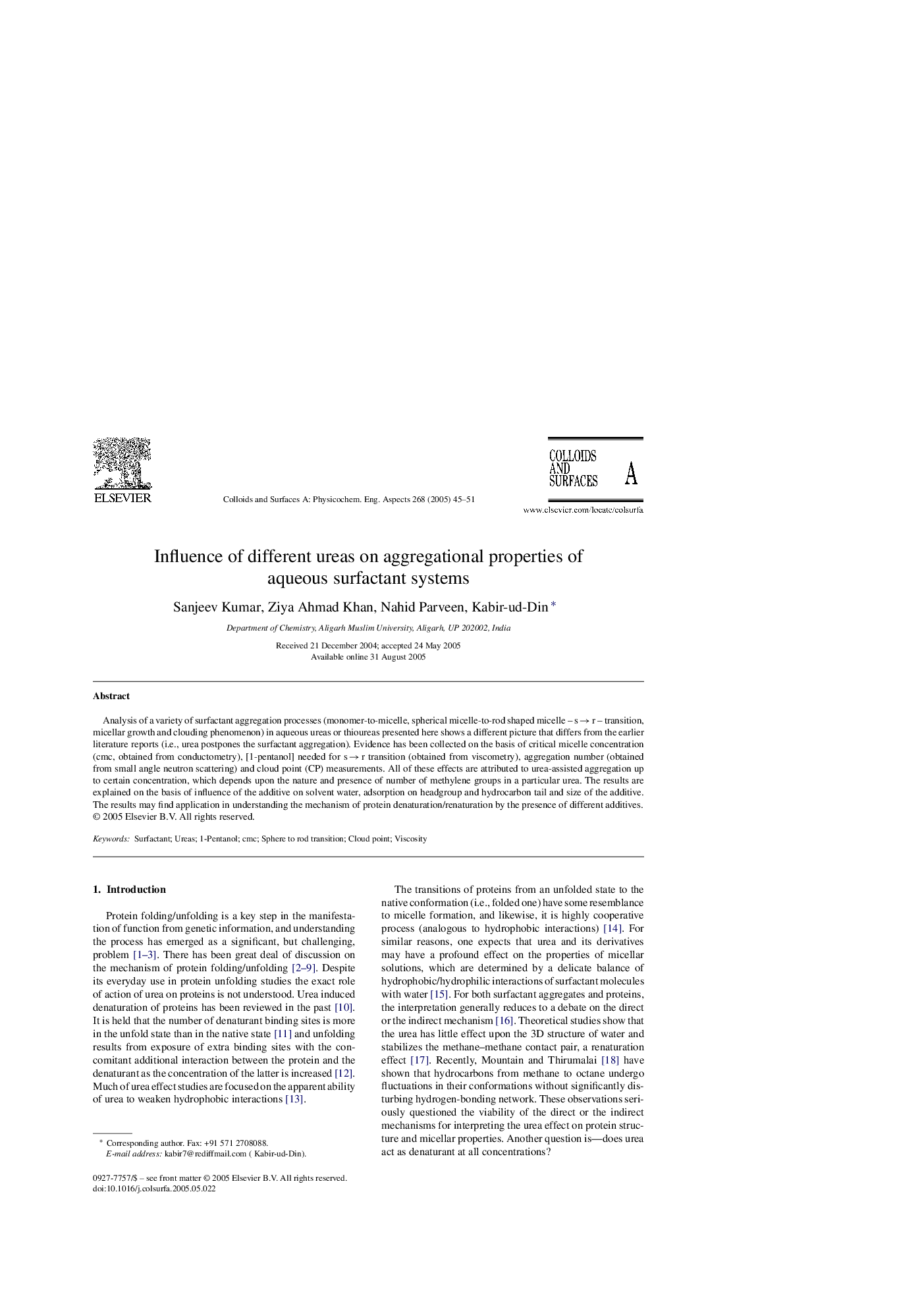| Article ID | Journal | Published Year | Pages | File Type |
|---|---|---|---|---|
| 9675598 | Colloids and Surfaces A: Physicochemical and Engineering Aspects | 2005 | 7 Pages |
Abstract
Analysis of a variety of surfactant aggregation processes (monomer-to-micelle, spherical micelle-to-rod shaped micelle - s â r - transition, micellar growth and clouding phenomenon) in aqueous ureas or thioureas presented here shows a different picture that differs from the earlier literature reports (i.e., urea postpones the surfactant aggregation). Evidence has been collected on the basis of critical micelle concentration (cmc, obtained from conductometry), [1-pentanol] needed for s â r transition (obtained from viscometry), aggregation number (obtained from small angle neutron scattering) and cloud point (CP) measurements. All of these effects are attributed to urea-assisted aggregation up to certain concentration, which depends upon the nature and presence of number of methylene groups in a particular urea. The results are explained on the basis of influence of the additive on solvent water, adsorption on headgroup and hydrocarbon tail and size of the additive. The results may find application in understanding the mechanism of protein denaturation/renaturation by the presence of different additives.
Related Topics
Physical Sciences and Engineering
Chemical Engineering
Colloid and Surface Chemistry
Authors
Sanjeev Kumar, Ziya Ahmad Khan, Nahid Parveen, Kabir-ud-Din Kabir-ud-Din,
